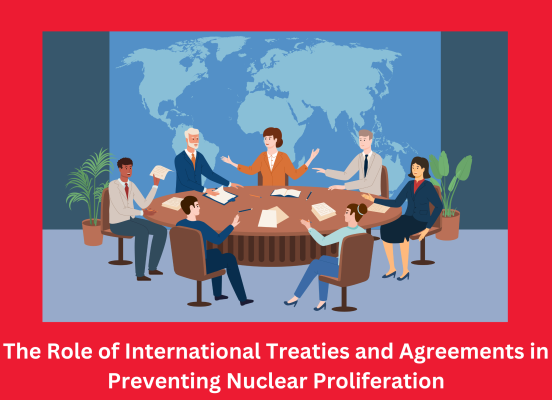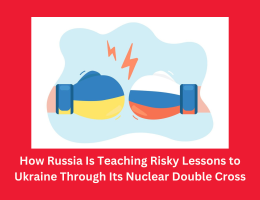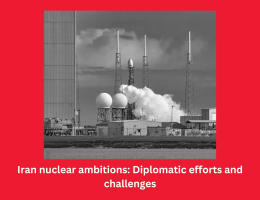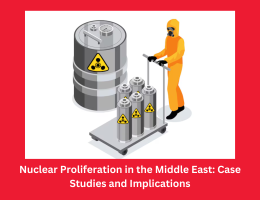
The Role of International Treaties and Agreements in Preventing Nuclear Proliferation
- By admin --
- Saturday, 09 Mar, 2024
Introduction:
International treaties and agreements have played a pivotal role in efforts to prevent the proliferation of nuclear weapons and promote global security. These legal instruments serve as frameworks for cooperation, establishing norms, obligations, and mechanisms aimed at curbing the spread of nuclear weapons. This essay explores the significance of international treaties and agreements in addressing the challenges of nuclear proliferation, highlighting key treaties, their provisions, and their impact on global non-proliferation efforts.
The Treaty on the Non-Proliferation of Nuclear Weapons (NPT):
The Treaty on the Non-Proliferation of Nuclear Weapons (NPT), opened for signature in 1968, stands as the cornerstone of international non-proliferation efforts. The NPT is a multilateral treaty designed to prevent the spread of nuclear weapons and promote disarmament, while facilitating the peaceful use of nuclear energy. Its key provisions include:
Non-Proliferation: The NPT prohibits non-nuclear-weapon states from acquiring or developing nuclear weapons, while nuclear-weapon states commit to not transferring nuclear weapons or assisting others in acquiring them.
Disarmament: Nuclear-weapon states pledge to pursue negotiations in good faith on effective measures relating to nuclear disarmament, with the ultimate goal of complete disarmament.
Safeguards: The International Atomic Energy Agency (IAEA) is responsible for verifying compliance with the NPT through safeguards agreements, which allow for inspections of nuclear facilities to ensure they are not being used for weapons purposes.
The NPT has been instrumental in limiting the spread of nuclear weapons, with the vast majority of countries adhering to its non-proliferation obligations. However, challenges remain, including concerns about compliance by certain states, the erosion of disarmament commitments, and the emergence of new proliferation threats.
Comprehensive Nuclear-Test-Ban Treaty (CTBT):
The Comprehensive Nuclear-Test-Ban Treaty (CTBT), adopted by the United Nations General Assembly in 1996, aims to ban all nuclear explosions, whether for military or civilian purposes. The CTBT establishes a global monitoring system to detect nuclear tests and verification mechanisms to ensure compliance with its provisions.
Although the CTBT has not yet entered into force due to the non-ratification by several key states, it serves as a crucial normative framework against nuclear testing. The treaty contributes to nuclear non-proliferation efforts by reinforcing the stigma associated with nuclear weapons testing and promoting international cooperation in monitoring and verification.
Treaty on the Prohibition of Nuclear Weapons (TPNW):
The Treaty on the Prohibition of Nuclear Weapons (TPNW), adopted by the United Nations in 2017, represents a significant development in efforts to stigmatize and eliminate nuclear weapons. The TPNW prohibits the development, testing, production, acquisition, possession, stockpiling, transfer, use, and threat of use of nuclear weapons, as well as assistance or encouragement of prohibited activities.
While the TPNW has garnered support from a majority of non-nuclear-weapon states, nuclear-armed states and their allies have expressed reservations or outright opposition to the treaty. Critics argue that the TPNW's effectiveness may be limited without the participation of nuclear-armed states, underscoring the challenges of achieving consensus on nuclear disarmament.
Bilateral and Regional Agreements:
In addition to multilateral treaties, bilateral and regional agreements have played a significant role in addressing nuclear proliferation. Examples include:
Strategic Arms Reduction Treaties (START): Bilateral agreements between the United States and Russia, such as the START I and START II treaties, aimed to reduce strategic nuclear arsenals and enhance transparency and confidence-building measures.
Treaty of Tlatelolco: The Treaty of Tlatelolco, signed in 1967, established a nuclear-weapon-free zone in Latin America and the Caribbean, prohibiting the testing, use, manufacture, production, or acquisition of nuclear weapons by states in the region.
Joint Comprehensive Plan of Action (JCPOA): The JCPOA, also known as the Iran nuclear deal, was negotiated in 2015 between Iran and the P5+1 (United States, United Kingdom, France, Russia, China, and Germany). The agreement aimed to limit Iran's nuclear program in exchange for sanctions relief, with provisions for verification and monitoring by the IAEA.
Conclusion:
International treaties and agreements are key to stop nuclear proliferation and advance global security. They form the foundation for collaboration, verification, and enforcement in the domain of nuclear non-proliferation, framed by NPT’s core abstractions and CTBT’s and TPNW normative frameworks.
Even though there have been great strides in preventing the spread of nuclear weapons using many different kinds of agreements, there continues to be problems. The success of systems regulating against the spread of such arms will be determined by whether countries are willing to keep to the agreements they have signed, whether agencies responsible for control function properly and whether global sense of instability is removed.
In order to strengthen current treaties, boost measures that build trust and are transparent and to deal with new proliferation threats, joint and active participation is necessary going forward. Unless there is global cooperation that is prolonged with action from all the nations can humanity effectively manage and eliminate completely the dangers related to nuclear proliferation.





